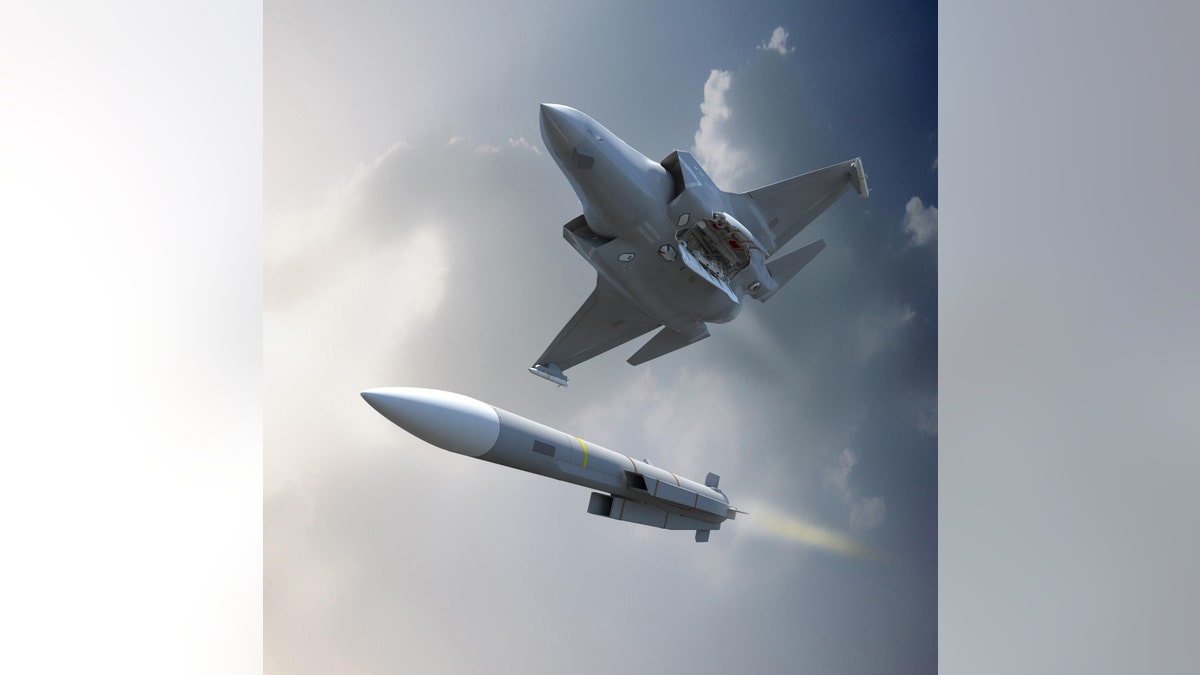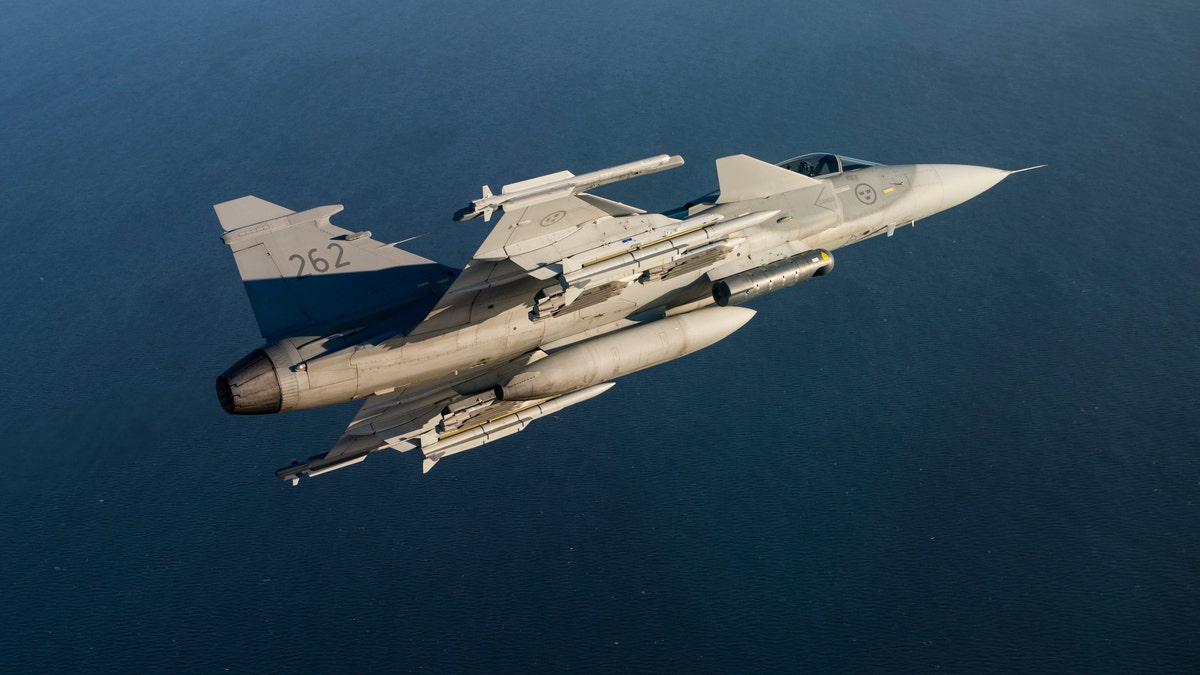
Meteor missiles will increase fighter jets' firepower. (MBDA)
There is no escape for enemy aircraft when up against fighter jets armed with the incredibly fast, powerful and extremely destructive Meteor missiles.
The Meteors are made to excel at hunting and destroying enemy threats at long ranges no matter the environment or weather conditions.
To ensure maximum destruction, the Meteor’s fragmentation warhead detonates on impact or at the optimum point of intercept.
Powered by air-breathing ramjets, these new missiles can reach ultra-fast speeds exceeding the speed of sound. Further boosting the destructive power, the ramjets provide the missile with thrust all the way through to the strike.
The goal is for Meteors to provide the largest “No Escape Zone” of any air-to-air missile – and for this zone to be on a scale of several times larger than current MRAAMs (Medium Range Air to Air Missiles).
In order to be effective in today’s combat, the missiles need to withstand electronic warfare threats from the enemy. The Meteors are engineered to remain effective in the face of dense electronic warfare attempts to stop them.
SUBTERRANEAN TERROR: CAN TECH DEFEAT HIDDEN UNDERGROUND THREATS?
The fighter jets of six key allies will be armed with Meteor weapons. The US-born, breakthrough fifth-generation F-35 Lightning IIs Joint Strike Fighters are set to become armed with the powerful Meteors as well.

Meteor on German Air Force Eurofighter Typhoon (MBDA)
Developed by a six-nation European team with MBDA and the U.K. Ministry of Defence taking the lead, the new missiles are now in full production.
And these powerful missiles just made their debut with the United States key ally, the United Kingdom. Carried by British Typhoon fighter jets, the new missiles sent a clear signal of military might when ‘eyeballing’ Russian bomber aircraft this week.
Russian Intercept
This week, British Royal Air Force Eurofighter Typhoons launched to intercept Russian aircraft approaching U.K. airspace.
Armed for the first time with the Meteor, they escorted the Russian aircraft that many believe to be the Russian long-range Tupolev Tu-160 "Blackjack" strategic bombers.
Before approaching U.K. airspace, the Russian military aircraft were intercepted and escorted by Royal Norwegian Air Force F-16s.
ARMY SETS SIGHTS ON NEW SNIPER CAMOUFLAGE
The Tu-160s flew on to Venezuela where they joined other Russian military aircraft in a high-profile show military force. Russian officials announced the bombers were participating in combined operational flights with the Venezuelan Air Force and that they were preparing to defend Venezuela when it is needed.

(MBDA)
This is the latest in a pattern of increased Russian military aircraft activity prompting RAF Typhoon fighter jets to intercept.
PODCAST: INSIDE AN INSPIRING MEDAL OF HONOR MISSION WITH USAF SOF
What is a ramjet?
Rather than the typical rocket motor, Meteors rely on ramjets for propulsion. A ramjet engine provides a simple, light propulsion system for high-speed flight.
The Meteor uses a solid fuel, variable flow, ducted rocket approach giving it a significant boost in power, increase in range and supporting precision at long ranges.
Ramjets are air-breathing engines that are known for delivering remarkable speeds exceeding Mach 3 and even beyond Mach 6 in some cases.
EXCITING NEW MEDICAL 'SILVER BULLETS' WILL SAVE MILITARY LIVES
Rockets burn onboard fuel whereas ramjets breathe air. This makes ramjet missiles suitable for firing in the atmosphere, but near or through space like rockets.

(MBDA)
Ramjets need to hit high speeds, say at about three times the speed of sound, to harness “ram pressure.” They use the air compression and shock waves yielded by the missile’s high speed.
Smart missiles
Each Meteor packs enormously destructive power into 418 pounds. The missiles are over 12 feet long and about 7 inches in diameter.
Meteors are Beyond Visual Range Air-to-Air Missiles or BVRAAMs.
The target does not need to be within the pilot’s visual range to be within range of a precise strike because Meteors are smart enough to locate their targets and conduct the attack on their own.
A highly advanced active radar seeker guides each missile against a range of targets. They do not need the pilot and advanced aircraft to guide them.
ARMY SETS SIGHTS ON BIGGER, BOLDER, HARDER HITTING BULLETS
However, pilots can communicate with the Meteor weapons. The pilot can intervene and re-direct the missile mid-flight or stop the mission if need be.
With the Meteor’s two-way data link capability, the pilot can receive data from the missile throughout its flight. This helps the pilot verify that the missile is correctly on course. It is also useful for the pilot to decide whether firing another missile is necessary.
PODCAST: FIND OUT THE SECRETS TO THE “TOP GUN” FIGHTER PILOT MIND-SET
When will Meteors hit the skies?
A missile this advanced does not happen overnight. The Meteor program began back in the 1990s.
In 2016, Sweden’s Saab Gripen was the first to declare operational capability with the Meteors and now British Typhoons are armed with the missiles as well.
The French Dassault Rafale, most probably the latest iteration, is expected to be armed next. Three more key U.S. allies - Germany, Italy and Spain – will also have their fighter jets upgraded with this fierce missile.
F-35 joint strike fighter jets may potentially also become armed with Meteors.
